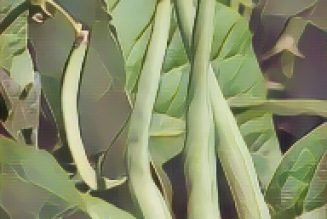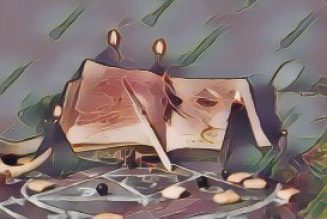Mandrake, or Mandragora officinarum, is a plant whose magical reputation is as deep and tangled as its roots. For centuries, witches, magicians, and herbalists have revered the mandrake as one of the most potent and mysterious plants in the world of witchcraft. Its very form—broad, wrinkled leaves hugging the earth and a thick, forked root that often resembles a miniature human—seems to hint at its supernatural power.
The magical properties of mandrake are legendary. In spellwork, the root is considered a powerful talisman, believed to draw protection, ward off evil spirits, and shield the bearer from curses and ill fortune. Witches would often carve the root into the likeness of a person, dress it in tiny clothes, and keep it hidden on their altar or in a secret pouch, trusting it to absorb negative energies and act as a guardian spirit.
Mandrake’s association with fertility is ancient and profound. In many traditions, couples seeking to conceive would place a mandrake root beneath their bed or carry a piece of the root as a charm, believing it would bless them with children. The root’s human-like shape was thought to embody the essence of life itself, making it a symbol of creation and renewal. In some rituals, mandrake was buried in the fields to ensure a bountiful harvest, or placed in the home to attract prosperity and abundance.
Perhaps most famously, mandrake is linked to the power of invisibility and magical enhancement. Folklore tells of witches who would anoint themselves with mandrake-infused ointments or carry the root during rituals to heighten their psychic abilities, cross into the spirit world, or move unseen by mortal eyes. In some grimoires, mandrake is an essential ingredient in potions for astral travel, shape-shifting, or summoning spirits.
The stories surrounding the mandrake’s supernatural powers are as vivid as they are chilling. According to European legend, the mandrake root houses a spirit known as the mandragoras—a tiny, beardless man who could bring fortune or disaster to those who possessed him. Harvesting the root was said to be fraught with peril: when pulled from the earth, the mandrake would emit a blood-curdling scream, deadly to any who heard it. To avoid this fate, witches devised elaborate rituals, such as tying the root to a black dog and letting the animal pull it free while the gatherer plugged their ears and turned away.
Mandrake roots were treasured as magical tools, used in spells for transformation, healing, and protection. They were placed on altars, carried as amulets, or ground into powders for use in incense and potions. Some believed that a mandrake root, properly awakened and cared for, could answer questions, reveal hidden truths, or even grant wishes. In times of danger, a mandrake charm was said to turn away thieves, shield the home from fire, and break the power of hexes.
The mandrake’s fame has echoed through history and legend. In the Bible, Rachel uses mandrakes in her quest for fertility. In medieval grimoires, the root is a key ingredient in the “flying ointment” of witches. Shakespeare’s plays reference its deadly scream, and in modern fantasy, mandrake remains a symbol of arcane power, from the pages of Harry Potter to countless works of art and literature.
To this day, the mandrake stands as a living emblem of the magical and the mysterious—a plant whose roots reach deep into the world of spirit and spellcraft. Whether used for protection, fertility, prosperity, invisibility, or magical enhancement, the mandrake continues to enchant and inspire all who seek its ancient power.





















